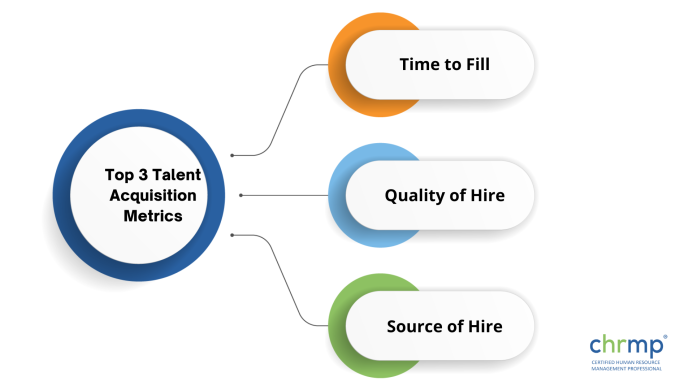

Employees make the basic building blocks of a company, driving every operation within. Hence, ensuring a solid foundational base is essential so the company runs efficiently.
It’s a no-brainer that talented, growth-driven employees can do wonders for a company’s success. However, such gifted individuals are not easy to find.
Effective talent acquisition is hands down one of the most critical factors attributed to a successful organization. If you genuinely wish to bring out the best in your company and gain an edge over your competitors, you need to acquire the best talent.
In this blog, you will learn about finding the right talent for your organization, effective talent acquisition strategies, tips to enhance the process and more.
Let’s dive right in without further ado.
Talent acquisition is a recruitment strategy aimed at sourcing, attracting, hiring and retaining top talent for an organization. It is a complex, structured process that the company’s HR department implements to acquire highly talented individuals.
Talent acquisition is often viewed as a strategic approach to the early stages of talent management, which is the process by which employers hire, deploy, train, and evaluate employee performance and compensation.What Is The Importance Of Talent Acquisition?
The highly competitive job market is one of the most important driving factors for companies to adopt an effective talent acquisition strategy. Applying a solid talent acquisition strategy helps your company stand its ground in the dynamic industrial landscape while continuing to accelerate towards success.
You need some of the best and most highly-skilled brains in your organization to establish itself as one of the leading companies in your niche area. However, attracting top talent is tricky unless you are already among the top companies in your niche.
To top it all, the ‘great resignation‘ movement of the covid-19 pandemic has only added to the pressure.
Highly talented employees with specialized or scarce skills quickly switch employees to acquire the most favourable working conditions. And this revolution in the world of work doesn’t seem to be slowing down any time soon.
A PwC’s Global Workforce Hopes and Fears Survey conducted in March 2022 revealed that skilled workers who don’t feel that their personal career goals have been fulfilled are highly inclined to quit.
According to the survey, “Workers who feel empowered by their current circumstances—i.e., those with specialized or scarce skills—are ready to test the market. More than one-third of respondents plan to ask for a raise in the coming year, and one in five said they are extremely or very likely to switch employers.”

A pay hike simply won’t suffice to retain these employees anymore.
Fulfilling, meaningful work that allows them to unleash their authentic self and a healthy work-life balance are some of the highly prioritized aspects of a job that these employees are now seeking.
Conclusion: with such a massive shift in today’s world of work, a solid talent acquisition strategy that prioritizes employee demands while taking care of organizational needs is vital to help your company succeed.
Many think people can use the terms ‘talent acquisition’ and ‘recruitment’ interchangeably. However, that isn’t exactly the case. There are small but significant differences between the two.
While both processes seek to bring quality employees into the company, talent acquisition is more of an ongoing process than simply recruiting candidates to fulfil a current hiring requirement.
While recruitment can be seen as a quick fix, talent acquisition involves strategic, long-term planning that caters to the company’s goal of achieving its strategic vision.
The process of talent acquisition involves several steps but to sum it up, here are the five primary stages of a talent acquisition process:
Even though talent acquisition is undergoing significant changes, some fundamental elements will always play an essential role in an effective talent acquisition strategy.
Combining long-term objectives of talent acquisition and critical business initiatives is key to achieving the ultimate goal of finding the perfect candidate that will help your company on its path to success.
Here are some of the key elements of an effective talent acquisition strategy:
Workforce planning plays a vital role in a talent acquisition strategy as it helps identify areas where top talent is required.
It also connects various aspects such as recruiting, hiring, employee development, and talent management by identifying required skills, assisting recruiters in targeting the suitable candidates with those skills and assisting managers in mapping internal employee growth pathways.
leveraging advanced recruitment technologies is quite helpful in a talent acquisition strategy as it automates and creates a streamlined process.
Efficient talent acquisition software is abundantly available in the market with neat features such as automatic job posting and real-time candidate application tracking that will help refine your talent acquisition endeavours.
An effective talent acquisition strategy uses data analytics and marketing to strengthen it and make it more efficient.
For starters, you can determine which questions discourage candidates from filling out job applications and eliminate them through data analytics.
Alternatively, you may discover that including images or videos to highlight company culture encourages more candidates to fill out job applications, which will perhaps allow more candidates to apply for a job with description A than description B.
You can also use analytics and data to ensure that your job descriptions and career pages aren’t discouraging qualified applicants from applying.
Talent acquisition metrics are essential for assessing the effectiveness of recruitment strategies and the overall success of the hiring process.
Here are three top talent acquisition metrics commonly used by organizations:

1.Time to Fill: Time to Fill measures the duration from the moment a job opening is posted until the position is filled. It helps evaluate the efficiency of the hiring process and the ability to attract qualified candidates promptly. A shorter time to fill indicates that recruitment efforts are effective and that the organization is able to secure top talent quickly.
2.Quality of Hire: Quality of Hire is a metric that assesses the performance and overall impact of new hires on the organization. It can be measured through various factors such as employee performance reviews, productivity, retention rates, and contributions to the company’s goals. Evaluating the quality of hires helps determine the effectiveness of the recruitment process and the alignment between candidate skills and organizational needs.
3.Source of Hire: Source of Hire refers to the channels or methods through which candidates discover job openings and eventually get hired. It provides insights into the effectiveness of different recruitment channels, such as job boards, social media platforms, employee referrals, direct sourcing, or recruitment agencies. By tracking the source of hire, organizations can allocate their resources effectively, invest in the most successful channels, and optimize their recruitment strategies.
These metrics can be further customized based on the specific goals and requirements of an organization. Additionally, other metrics like cost per hire, candidate experience, and diversity metrics are also commonly used in talent acquisition to gain a comprehensive understanding of the recruitment process.
To succeed in today’s competitive industrial world, you must find and retain the best talent for your company. An effective talent acquisition strategy will help you do just that.
Drawing up the best talent acquisition strategy that seamlessly fits your company’s requirements can be quite the daunting task; the following tips will prove immensely helpful:
Before they become employees, candidates interact with your brand. Brand awareness and employer branding play a significant role in attracting top talent.
A company that makes employee well-being a priority is a place where people want to work. Developing your company’s identity to reflect a positive, growth-driven environment can be a powerful tool in your talent acquisition strategy.
Employee advocacy (your employees’ feedback) is an excellent way to build your company’s identity and boost brand recognition. This is usually a collaborative effort between your human resources and marketing teams.
As mentioned, talented candidates with en vogue and specialized skills play the field thoroughly before settling down with one company.
To attract top talent to your company, designing a comprehensive benefits package and an attractive stipend can prove quite effective in your talent acquisition and retention endeavours.
Some expected benefits that candidates seek are good health benefits (including mental health), healthy work/life balance, paid vacation, etc.
Even though the number of women occupying prominent positions in companies has drastically increased over the past few decades, there still are several areas in the industrial landscape that men largely dominate.
This leads to feelings of underrepresentation among female employees within the company.

Diversity entails hiring people from diverse backgrounds, ages, experiences, disabilities, faiths, and gender identities and ensuring that everyone feels valued, engaged, and free to be themselves.
Making your workplace a place where different points of view are valued and heard will go a long way in attracting and retaining top talent.
Yes, talent acquisition is undoubtedly a promising career that is highly rewarding and lucrative. Talent acquisition managers enjoy relatively high levels of job satisfaction as their work provides a good amount of autonomy and diversity in daily tasks.
If you are someone who fancies having something new to do every day instead of a classic 9-to-5 job characterized by monotony, pursuing a career in talent acquisition will be the perfect choice for you.
Also, a well-compensated salary and benefits package is just the icing on the cake.
CHRMP (Certified Human Resource Management Professional) provides the best certification course for those looking to specialize in talent acquisition.
CHRMP Certification in Talent Acquisition develops and validates competencies in the Human Resource Management domain of Recruitment & Selection. It demonstrates that the credential holder has strategic insights and practical tools for identifying and recruiting the best talent for the organization.
There is always the right person for the job; our certification helps you identify precisely that.
CHRMP Talent Acquisition certification program offers cutting-edge knowledge while applying world-class tools and techniques to enhance your skills in recruiting and retaining the best possible talent for your organization.

Explain your process of finding the perfect candidate, and be confident in talking about your skill and past achievements.
Express your enthusiasm and passion for the field, what motivates you, and how your work gives you a sense of purpose and meaning.
Lay out your approach to assessing a candidate and mention the top must-have skills (like resourcefulness, loyalty, and growth-driven) in your ideal candidate.
Are you ready to take your career to the next level? Enrol with CHRMP today to develop the most competitive and in-demand HR skills and make your mark. Join our global community of leading HR professionals today!
What is talent acquisition, and how is it different from recruitment?
Talent acquisition is the process of identifying, attracting, and hiring skilled employees to fill specific job roles in an organization. While recruitment is a part of TA, it primarily involves filling vacancies as quickly as possible. TA, on the other hand, takes a more strategic approach by focusing on identifying and acquiring talent for future organizational needs.
What are some of the key components of a successful TA strategy?
A successful TA strategy includes several key components, such as building a strong employer brand, creating a diverse and inclusive hiring process, implementing effective sourcing techniques, using data and analytics to inform hiring decisions, and providing a positive candidate experience.
What are some common challenges faced in talent acquisition, and how can they be addressed?
Some common challenges in talent acquisition include attracting top talent in a competitive job market, reducing time-to-hire, creating an efficient hiring process, and maintaining a positive employer brand. To address these challenges, organizations can use innovative sourcing techniques, invest in technology, streamline their hiring process, and focus on creating a positive candidate experience.
How can technology help improve talent acquisition?
Technology can help improve talent acquisition by streamlining the hiring process, automating repetitive tasks, providing data and analytics to inform hiring decisions, and enhancing the candidate experience. Examples of technology used in talent acquisition include applicant tracking systems, candidate relationship management software, and video interviewing tools.
What are some best practices for TA?
Some best practices for TA include creating a strong employer brand, establishing a diverse and inclusive hiring process, providing a positive candidate experience, using data and analytics to inform hiring decisions, and continuously assessing and improving the hiring process. Additionally, it’s important to be adaptable and flexible in the face of changing organizational needs and a constantly evolving job market.
In conclusion, talent acquisition is a critical process for any organization seeking to remain competitive in today’s job market. It involves identifying, attracting, and hiring skilled employees who can help the organization achieve its goals and thrive in an ever-changing environment.
A successful talent acquisition strategy requires a proactive approach that focuses on building a strong employer brand, creating a diverse and inclusive hiring process, implementing effective sourcing techniques, using data and analytics to inform hiring decisions, and providing a positive candidate experience.
By investing in talent acquisition, organizations can build a pipeline of top talent, reduce turnover rates, and ultimately achieve long-term success. It’s important to continually assess and improve the talent acquisition process to stay ahead of the curve and attract the best candidates possible.
© 2007-2025 CHRMP| All Rights Reserved | Powered by Ripples Learning & Research Private Limited
